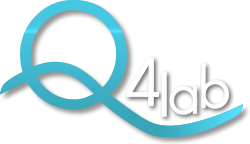Model System - Cer1; Cripto double mutants
Cer1;Cripto compound mutants recover the orientation of the A–P axis and most of the subsequent gastrulation processes, which are severely impaired in the Cripto null mutants. Moreover, a subset of Cer1−/−;Cripto−/− embryos show the formation of a double axis
Figure legend:
On the left double WISH of wt, Cripto−/− and Cer1−/−;Cripto−/− embryos showing how the Cer1;Cripto-double mutants rescue the expression of the anterior neural markers which are are aligned along an A-P axis, as in the wt embryo.
On the right Morphological analysis of 12.5 dpc wt and Cer1−/−;Cripto−/− embryos. The Cer1;Criptoembryos are significantly smaller than the wt embryos, show anterior head truncations, but form branchial arches and a rudimentary heart.
Scale bars represent 300 μm.
Description
We generated Cer1;Cripto mouse double mutants by crossing Cer1-/- (Belo et al., 2000 ) and Cripto+/- (Liguori et al., 2003) mice. The resulting Cer1-/-;Cripto+/- are apparently normal and fertile and were intercrossed to collect both Cer1+/- ;Cripto-/- and Cer1-/-;Cripto-/- embryos.
The removal of Cer1 , even one of the two gene copies, rescues significant features of the Cripto −/− phenotype. In summary, we show that double mutant embryos clearly develop further than Cripto −/− mutants; in particular, they form posterior neuroectoderm and correctly position the A– P axis. These data demonstrate that Cer1 and Cripto genetically interact in mouse to control embryonic axis development.
Validation info
The generation, characterization and phenotypic analysis of Cer1;Cripto mutants have been published in a peer-reviewed journal (see citations).



